Idea Mind
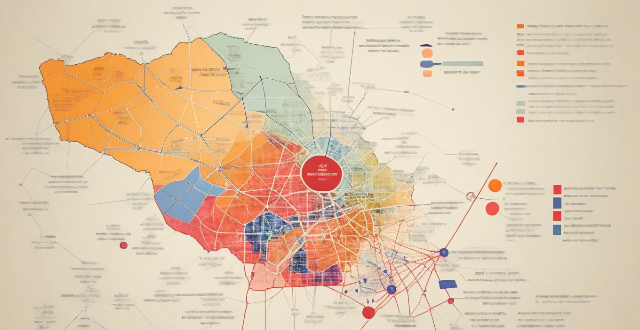
How can mind maps help in revising large amounts of information ?
Mind maps are a useful tool for organizing and revising large amounts of information. By visualizing complex information, identifying key themes and relationships, organizing thoughts, improving memory retention, and facilitating creative thinking, mind maps can help learners better understand and retain information. To use mind maps effectively, choose a central idea or theme, create branches for subtopics, add details and examples, connect related ideas, review and refine the map, and use it as a study tool.

What are some tips for creating effective mind maps ?
Effective mind maps should start with a central idea, use images and colors, connect ideas with lines, keep it simple, use keywords and phrases, be creative, and review and revise.

What are the benefits of using mind maps in education ?
Mind maps are a valuable tool in education, offering benefits such as enhanced learning and retention, promotion of creative thinking, improved organizational skills, facilitated collaboration, and encouragement of active learning. They cater to visual learners, aid in brainstorming and idea generation, help with information hierarchy and time management, are useful for group work and communication, and increase student engagement and self-assessment. Incorporating mind maps into teaching strategies can create a more effective and engaging learning environment.
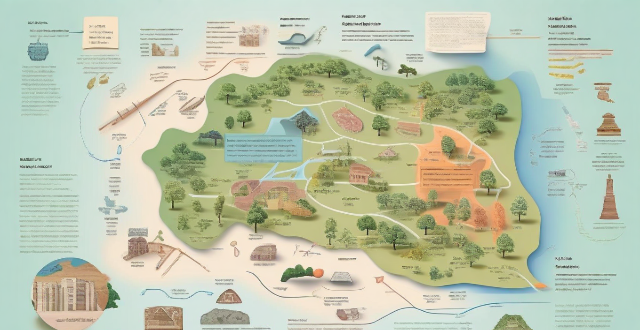
How can mind maps be used to enhance note-taking and organization ?
Mind maps are an effective tool for organizing information, enhancing memory recall, and improving note-taking. They offer a visual representation of complex ideas, making it easier to understand and remember them. Mind maps can be used in various ways, such as organizing information, enhancing memory recall, and improving note-taking. They utilize visual associations, hierarchical structures, and flexibility to aid in understanding, remembering, and applying complex information in different contexts. Examples of using mind maps include studying, project planning, brainstorming, and taking meeting notes.

In what ways can mind mapping help with project management and planning ?
Mind mapping is a valuable tool for project management and planning, offering benefits such as clarifying objectives, enhancing brainstorming sessions, facilitating task breakdown, tracking progress, managing risks, and improving communication. By providing a visual representation of information, mind maps enable clearer understanding and more effective collaboration among team members, ultimately contributing to the success of projects.
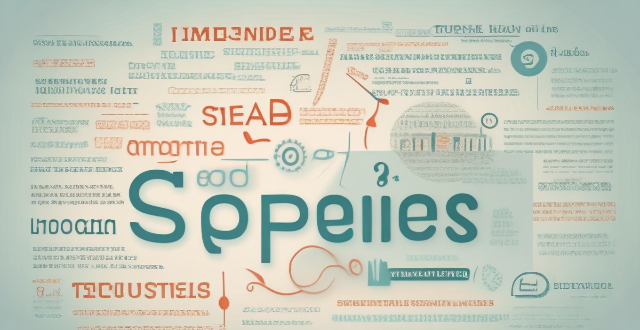
Do yoga poses have different effects on the body and mind ?
Yoga poses have different effects on the body and mind, including improved flexibility, strength, balance, stress reduction, concentration, and emotional release. Incorporating a variety of poses into your practice can help you achieve specific goals and transform your body and mind.
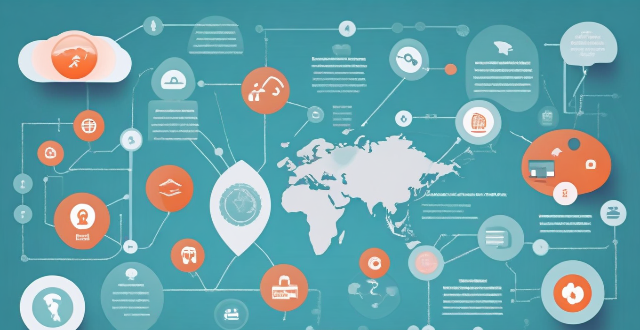
Can mind mapping be effectively used in business settings ?
Mind mapping is a visual tool that can be effectively used in business settings to enhance productivity, creativity, and communication. It helps individuals and teams organize information, generate ideas, and solve problems by creating a structured diagram of related concepts. The benefits of mind mapping in business include improved organization, enhanced creativity, increased productivity, and better communication. To implement mind mapping in business, one should choose the right tool, train their team, integrate it into processes, encourage collaboration, and continuously evaluate its effectiveness.

What are the best software tools for creating mind maps ?
Best Software Tools for Creating Mind Maps Mind maps are an excellent way to visually organize information, ideas, and thoughts. They help in brainstorming, planning, and problem-solving. There are several software tools available that make it easy to create mind maps. Here are some of the best ones: 1. XMind is a powerful mind mapping tool that offers a range of features to create professional-looking mind maps. It has a user-friendly interface and supports various chart types, including tree, logic, and matrix. XMind also allows you to import and export data in different formats, making it easy to share your work with others. 2. MindMeister is an online mind mapping tool that lets you create mind maps directly in your browser. It offers real-time collaboration, allowing multiple users to work on the same mind map simultaneously. MindMeister also integrates with popular apps like Google Drive and Dropbox, making it easy to save and share your work. 3. Coggle is another online mind mapping tool that offers a simple and intuitive interface. It allows you to create beautiful mind maps with images, links, and notes. Coggle also supports collaboration, letting you invite team members to work on the same mind map together. 4. FreeMind is a free, open-source mind mapping tool that offers basic functionality for creating mind maps. It has a clean and straightforward interface, making it easy to get started with mind mapping. FreeMind also allows you to export your mind maps in various formats, including HTML and PDF. 5. iMindMap is a comprehensive mind mapping tool that offers a wide range of features for creating visually stunning mind maps. It has a unique "radial" view that makes it easy to focus on specific areas of your mind map. iMindMap also supports multimedia elements, such as images and audio files, making it an excellent tool for creative projects.

How do mind maps aid in studying and retaining information ?
Mind maps are a visual tool that aids in studying and retaining information by improving organization, enhancing creativity, promoting active learning, and facilitating recall. They provide a logical structure for organizing thoughts and connecting ideas, making complex information more accessible. Mind maps also encourage brainstorming and experimentation, leading to better learning outcomes. Additionally, they promote deeper learning through active participation and reflection on understanding. Finally, mind maps facilitate recall by providing visual cues and breaking down information into manageable chunks. Incorporating mind maps into your study routine can boost academic performance and achieve better results in your studies.

How can mind mapping improve creativity and problem-solving skills ?
Mind mapping is a tool that enhances creativity and problem-solving skills by providing a visual way to organize information. It stimulates brainstorming, enhances visualization, and promotes collaboration for creative thinking. Mind mapping also aids in problem-solving by identifying core issues, providing clarity and focus, and facilitating decision making.

How does mind mapping compare to other brainstorming techniques ?
The text discusses the differences between mind mapping and other brainstorming techniques such as free writing, brainstorming sessions, and sketching. Mind mapping is a visual technique that involves creating a diagram to organize information, while free writing involves writing down ideas without any particular structure or organization. Brainstorming sessions typically involve a group of people working together to generate ideas, while sketching offers more freedom in terms of visual expression and experimentation. The author concludes that mind mapping offers a unique approach to brainstorming that combines structure, visualization, and flexibility, making it particularly effective for those who prefer a visual and organized method of generating and organizing ideas.
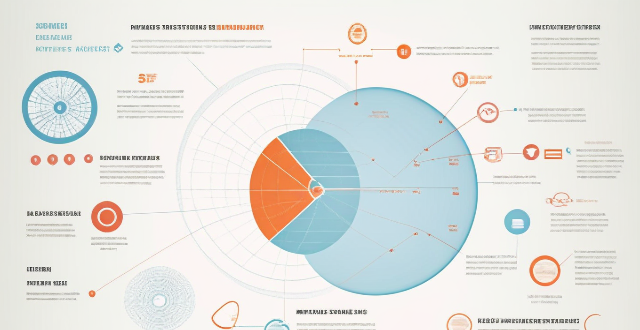
Are there any drawbacks or limitations to using mind maps ?
Mind maps are a popular tool for brainstorming, planning, and organizing information. However, they have limitations and drawbacks such as oversimplification of complex information, limited depth, subjectivity and bias, difficulty in handling large amounts of data, reliance on visual memory, and technological limitations. It's essential to be aware of these drawbacks to use them effectively and choose the right tool for the job at hand.
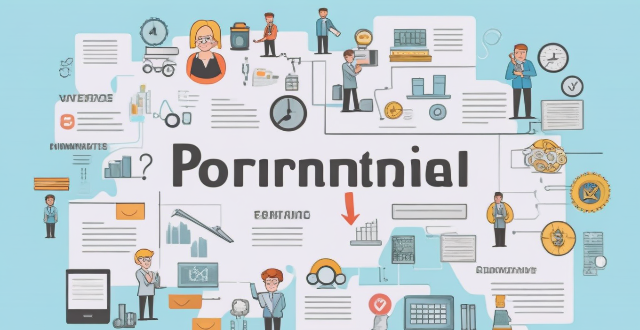
How do I pitch my business idea to potential investors ?
Pitching a business idea to potential investors is crucial for securing funding. It involves careful preparation, clear communication, and a compelling narrative. Research the investor's background, craft a story that defines the problem and solution, and create a pitch deck with visuals. Practice your pitch, connect with the investor, and be ready for questions. Follow up with a thank-you note and maintain contact.

What should I keep in mind while shopping at a sample sale ?
Shopping at a sample sale can be an exciting experience, but it's important to keep a few things in mind to make the most of your shopping trip. Here are some tips to help you navigate a sample sale successfully: ## **1. Research beforehand** Before heading to the sample sale, do some research on the brand and the types of products they typically offer. This will give you an idea of what to expect and help you prioritize your shopping list. - **Know the brand**: Familiarize yourself with the brand's style, quality, and price range. - **Check the sale schedule**: Find out when the sale starts and ends, and plan your visit accordingly. - **Set a budget**: Decide how much you're willing to spend and stick to it. ## **2. Arrive early** Sample sales can get crowded quickly, especially for popular brands or items. Arriving early ensures that you have first pick of the merchandise and avoid long lines. - **Be prepared**: Bring a bag or a cart to carry your purchases. - **Dress comfortably**: Wear comfortable shoes and clothing, as you may need to try on clothes or move around a lot. ## **3. Be selective** While it's tempting to buy everything in sight, remember that not all items at a sample sale are worth purchasing. Be selective and only buy what you truly love or need. - **Try everything on**: Make sure the item fits well and looks good on you before buying it. - **Check for defects**: Look for any damages, stains, or missing parts before making a purchase. - **Compare prices**: Check if the discount is actually worth it by comparing the sale price to the original price. ## **4. Don't be afraid to ask questions** If you're unsure about something, don't hesitate to ask the staff for assistance. They can provide information about sizing, fabric care, or availability of other items. - **Ask about returns**: Find out if there's a return policy and what the terms are. - **Inquire about additional discounts**: Sometimes, stores offer further discounts for multiple purchases or during certain times of the day. - **Request more options**: If you like an item but it's not available in your size or color, ask if they have any more in stock. ## **5. Keep an open mind** Sample sales often feature unique pieces that aren't typically found in regular retail stores. Embrace the opportunity to discover new styles and trends. - **Try different styles**: Even if you wouldn't normally choose a particular style, give it a chance – you might be surprised! - **Look beyond your usual size**: Sometimes, slightly larger or smaller sizes can work with layering or alterations. - **Consider accessories**: Accessories like jewelry, bags, and scarves can add a pop of color or texture to your wardrobe without breaking the bank.

What are some exercises or activities that can help me become more innovative ?
Innovation is a critical skill in today's fast-paced world. Here are some exercises and activities that can help you become more innovative: 1. Brainstorming: Gather a group of people and ask them to share their thoughts on a particular topic. The goal is to generate as many ideas as possible, without judging or evaluating them. This exercise can help you come up with creative solutions to problems and identify areas for improvement. 2. Mind Mapping: Create a diagram that connects related concepts and ideas. This exercise can help you see connections between different ideas and identify new opportunities for innovation. 3. SCAMPER: Ask questions about each letter in the SCAMPER acronym (Substitute, Combine, Adapt, Modify, Put to another use, Eliminate, and Reverse/Rearrange) to generate new ideas by looking at things from different angles. This exercise can help you identify new opportunities for innovation and improve existing products or processes. 4. Design Thinking: A human-centered approach to problem-solving that focuses on empathy, collaboration, and experimentation. It involves understanding the needs and desires of the people who will use your product or service, brainstorming solutions, prototyping, testing, and refining those solutions until they meet the needs of your users. This exercise can help you create innovative solutions that are tailored to the needs of your target audience.

What should I keep in mind while shopping during the discount season ?
Shopping during the discount season can be an exciting experience, but it's important to keep certain things in mind to ensure that you make wise purchases and don't overspend. Here are some key points to consider: 1. Set a budget and stick to it. 2. Make a list of items you need and want to purchase. 3. Research prices and compare them across different stores. 4. Check for quality and read reviews before making a purchase. 5. Look for extra discounts and promotions. 6. Avoid impulse buying by thinking before you buy and waiting for 24 hours if unsure. 7. Check the return policy and keep receipts in case you need to return or exchange an item later on. By following these tips, you can make wise purchases and avoid overspending during the discount season.
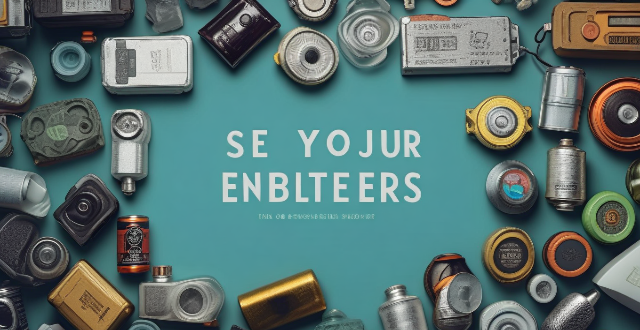
How often should I replace my iPhone, or is buying a second-hand one a good idea ?
Replacing your iPhone depends on various factors such as performance, battery life, and the availability of new features in the latest models. It is generally recommended to replace your iPhone every two to three years to take advantage of the latest technology and improvements in performance and battery life. Signs that it's time to replace your iPhone include decreased performance, short battery life, lack of software updates, and damaged screen or body. Buying a second-hand iPhone can be a good idea if you are looking to save money and don't necessarily need the latest model, but there are some things to consider before making this decision.
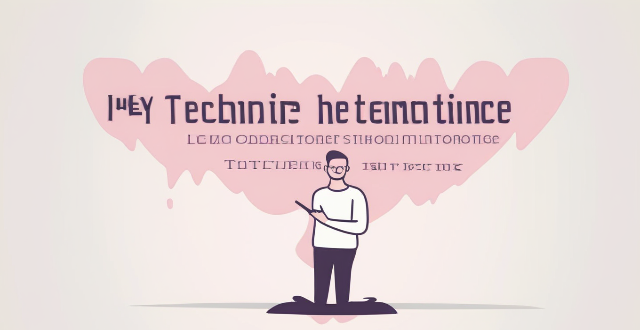
Are there any breathing techniques that can help reduce stress ?
Breathing techniques are a simple yet powerful tool for reducing stress levels and promoting relaxation. By practicing these techniques regularly, you can improve your overall well-being and reduce the negative effects of stress on your body and mind. Some effective breathing techniques for stress reduction include deep breathing, diaphragmatic breathing, alternate nostril breathing, and box breathing. These techniques help to increase oxygen flow to the brain, relax the body, balance the left and right hemispheres of the brain, and slow down the heart rate. Remember to focus on your breath and try to clear your mind of any distractions while practicing these techniques.

How does the idea of 'no pain, no gain' affect people's approach to exercise ?
The "no pain, no gain" philosophy significantly influences people's attitudes toward exercise. While it can boost motivation and discipline, it also poses risks like injuries and overtraining. This mindset may lead to a narrow focus on immediate results, potentially neglecting long-term health goals. It can also negatively affect mental health by causing stress and burnout. Adopting a balanced approach that emphasizes enjoyment, gradual progression, and self-awareness can help achieve fitness goals sustainably without the drawbacks associated with "no pain, no gain."

What strategies can I use to overcome creative blocks ?
Overcoming Creative Blocks: Strategies and Techniques Creative blocks can be frustrating, but they're a common occurrence for many people. Fortunately, there are several strategies you can use to overcome them. In this article, we'll explore some of the most effective techniques for getting your creativity flowing again. Understanding Creative Blocks Before diving into strategies, it's important to understand what causes creative blocks. Here are some possible reasons: - Lack of inspiration - Fear of failure - Perfectionism - Stress and fatigue - Routine Strategies for Overcoming Creative Blocks Now that we know some potential causes, let's look at strategies for breaking through those barriers. Change Your Environment Sometimes a change of scenery is all it takes to spark new ideas. Try working in a different location, such as a coffee shop, library, or park. Even rearranging your workspace can help stimulate creativity. Take Breaks and Rest It's essential to give your mind time to recharge. Step away from your work and engage in activities that relax you, like taking a walk, meditating, or listening to music. Often, solutions come when you're not actively trying to find them. Set Small Goals Breaking down a large project into smaller, manageable tasks can help alleviate feelings of overwhelm. Focus on one small aspect at a time and celebrate each accomplishment. Embrace Imperfection Remember that creativity doesn't have to be perfect. Give yourself permission to create something messy or incomplete. You can always refine it later. Collaborate with Others Working with someone else can bring fresh perspectives and ideas. Brainstorm with friends, colleagues, or an accountability group. Their input might be just what you need to break through your block. Practice Mindfulness and Meditation Mindfulness exercises and meditation can help clear your mind and reduce stress, making it easier to access your creative thoughts. Even a few minutes of deep breathing can make a difference. Engage in Other Creative Activities Sometimes engaging in another form of creativity can spark ideas for your main project. Try drawing, writing poetry, or playing music – anything that gets your creative juices flowing. Use Writing Prompts or Creative Exercises Writing prompts or creative exercises can provide structure and guidance when you're feeling stuck. These can be found online or in books dedicated to helping artists and writers overcome blocks. Seek Inspiration from Other Art Forms Look at art, listen to music, watch movies, or read books in genres different from your own. Exposure to other forms of creativity can inspire new ideas and approaches in your own work. Keep a Journal or Sketchbook Regularly recording your thoughts, dreams, and ideas can help you tap into your subconscious mind. A journal or sketchbook becomes a repository for potential projects and solutions to creative blocks.

What are the best methods for taking notes in class ?
The text provides a comprehensive overview of four effective methods for taking notes in class, namely the Cornell Method, Outlining Method, Mind Mapping Method, and Sentence Method. The Cornell Method involves dividing your paper into three sections to organize your notes, while the Outlining Method uses headings and subheadings to create a hierarchical structure. The Mind Mapping Method is a visual technique that involves creating a diagram of connected ideas, and the Sentence Method involves taking notes in complete sentences to better understand and retain information. Each method has its own unique steps and benefits, making it important for students to choose the one that works best for them.

How can I stimulate my brain to generate new ideas ?
How to stimulate your brain to generate new ideas?
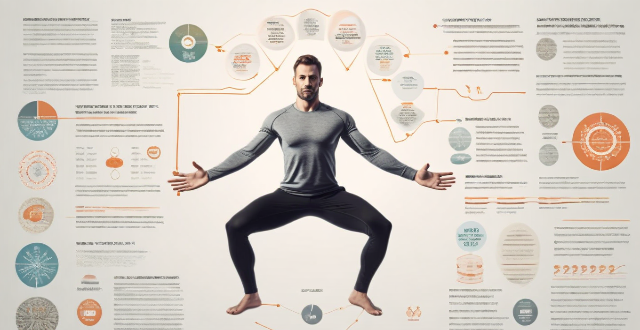
Are there any particular mental exercises that can make me more creative ?
Creativity can be enhanced through various mental exercises such as brainstorming, incubation, analogical reasoning, constraints, reverse thinking, cross-disciplinary learning, physical activity, and mindfulness meditation. These techniques help generate new ideas, foster inventive solutions, and improve cognitive function. By practicing these exercises regularly, one can develop creativity and innovation skills, leading to a more imaginative and productive mindset.

Are there any specific habits or routines that can foster creativity ?
Creativity is a valuable skill that can be developed and nurtured through specific habits and routines. Here are some practices that can help you enhance your creative thinking: 1. Regular Brainstorming Sessions: Set aside time regularly to brainstorm, either alone or with a group. Solo Brainstorming: Write down every idea that comes to mind, no matter how silly or unconventional. Group Brainstorming: Encourage everyone to share their thoughts freely without immediate judgment. 2. Embrace Curiosity: Make it a habit to ask questions and seek answers. Learn Something New Every Day: Dedicate time each day to learn about a new topic or skill. Explore Different Perspectives: Try to understand different viewpoints and approaches to problems. 3. Incorporate Novelty: Introduce new experiences and challenges into your life. Travel: Visit new places and experience different cultures. Try New Hobbies: Take up a new hobby or activity that you've never done before. 4. Regular Reflection: Take time to ponder and analyze your thoughts and feelings. Journaling: Write down your thoughts, ideas, and experiences regularly. Meditation: Practice mindfulness meditation to clear your mind and increase awareness. 5. Collaborate with Others: Work with others to generate innovative solutions. Diverse Teams: Collaborate with people from various backgrounds and disciplines. Brainstorming Sessions: Host collaborative brainstorming sessions to generate new ideas together. 6. Maintain a Healthy Lifestyle: Prioritize self-care and well-being. Exercise: Engage in regular physical activity to improve cognitive function and reduce stress. Sleep: Ensure you get enough sleep to recharge your mind and body. By incorporating these habits and routines into your daily life, you can cultivate a more creative mindset and approach problems with fresh perspectives. Remember that creativity is a skill that can be developed over time, so be patient and persistent in your efforts.

Can you recommend any make-ahead breakfast ideas that I can prep on weekends ?
Topic: Make-Ahead Breakfast Ideas for Busy Weekdays Summary: The text offers several make-ahead breakfast ideas that are not only convenient but also healthy and delicious. These include overnight oats, breakfast burritos, muffin tin egg cups, and breakfast cookies. Overnight oats can be customized with various mix-ins like fruits, nuts, and spices. Breakfast burritos offer the flexibility of adding different vegetables, cheeses, and meats. Muffin tin egg cups provide a fun and customizable way to enjoy eggs without standing over the stove in the morning. Lastly, breakfast cookies offer a unique twist on traditional breakfast fare with sweetness from ripe bananas and natural flavors from mix-ins like nuts or chocolate chips. All these options can be prepared ahead of time, ensuring a stress-free and healthy start to each day.

How do I evaluate the performance of a financial product before investing ?
Evaluate the performance of a financial product before investing by researching its history and reputation, analyzing fees and charges, evaluating risk level, considering potential returns, and seeking professional advice.

How can women ensure they have access to medical care and support in case of illness or injury while traveling ?
How Can Women Ensure They Have Access to Medical Care and Support in Case of Illness or Injury While Traveling? Traveling can be an exciting adventure, but it's important to ensure that you have access to medical care and support in case of illness or injury. Here are some tips for women to ensure they have access to medical care while traveling: 1. Research Before You Go: Before embarking on your journey, research the local healthcare system and facilities. Look for hospitals, clinics, and pharmacies in the area you will be visiting. Make a list of emergency numbers and keep them with you at all times. 2. Get Travel Insurance: Consider purchasing travel insurance that includes medical coverage. This will give you peace of mind knowing that you are covered in case of an unexpected illness or injury. 3. Pack a First Aid Kit: Pack a first aid kit with essential items such as bandages, antiseptic wipes, pain relievers, and any prescription medications you may need. It's also a good idea to bring along copies of your prescriptions in case you need to refill them while traveling. 4. Stay Healthy: Take steps to stay healthy while traveling. Wash your hands frequently, eat nutritious meals, drink plenty of water, and get enough sleep. Avoid risky behaviors such as excessive alcohol consumption or participating in dangerous activities without proper safety gear. 5. Seek Help When Needed: If you do become ill or injured while traveling, don't hesitate to seek medical attention. Many countries have English-speaking doctors and nurses who can provide assistance. If you are unable to communicate effectively with local healthcare providers, consider using translation services or seeking out expatriate communities for support. In conclusion, ensuring access to medical care and support while traveling is crucial for women's health and safety. By doing your research beforehand, getting travel insurance, packing a first aid kit, staying healthy, and seeking help when needed, you can enjoy your travels with peace of mind knowing that you are prepared for any potential emergencies.

What are some unique and creative gift ideas for Christmas ?
Unique and Creative Gift Ideas for Christmas Christmas is a time for giving, and what better way to show your loved ones how much you care than with a unique and creative gift? Here are some ideas that will make your holiday season memorable: 1. Personalized Gifts: Custom jewelry, handmade items, and DIY candles are thoughtful and elegant options that show warmth and love. 2. Experience Gifts: Adventure activities like skydiving or surfing lessons, cultural experiences such as theater tickets or cooking classes, and tech-savvy gifts like custom phone cases or smartwatches offer exciting opportunities for personal growth and enjoyment. 3. Charitable Gifts: Donations in their name to animal welfare organizations, educational fundraisers, environmental protection groups, child sponsorship programs, community gardens, or arts patronage support causes close to their heart while making a positive impact on the world. 4. Pampering Gifts: Beauty treatments like spa day passes, manicure/pedicure sets, aromatherapy kits, wellness packages such as yoga class subscriptions, juicer machines, and meditation apps promote relaxation and self-care. Remember, it's not about how much you spend but the thought and effort behind the gift that truly matters. So get creative and make this Christmas one to remember!

How much should I expect to pay for a second-hand iPhone ?
When purchasing a second-hand iPhone, factors suchWhen purchasing a second-hand iPhone, factors such and demand can impact the price Researching online and local listings, negotiating with sellers, and considering warranty and return policies are tips for finding a good deal.